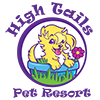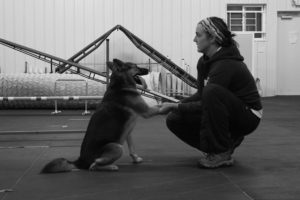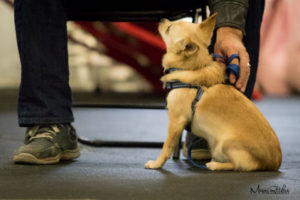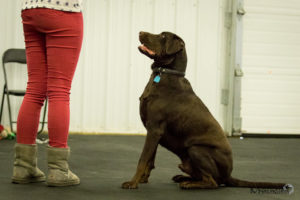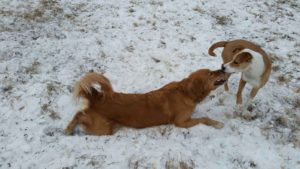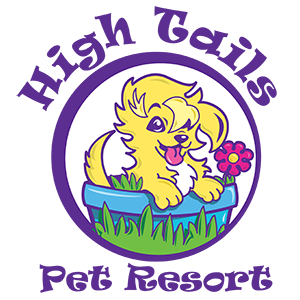One of the most common behaviour issues that our clients face is living with a reactive dog. Reactivity can be defined as barking, lunging, growling or generally presenting an aggressive front to other dogs and people. It makes walking, training and finding pet care for your pup extremely difficult. Often families are embarrassed and feel that they’ve let their dog get out of control.
Fortunately, reactivity is an issue that can be resolved by applying a structured training program. At High Tails Pet Resort, we pride ourselves on offering great solutions to families struggling with a reactive dog and we wanted to share some of these solutions with you.
Step 1 – Reduce Stressors
Reactive dogs often live in a high stress world. Their adrenaline system goes into over drive and they rarely feel a sense of calm or peace. Owners often describe their dogs as “hyper” or “over excited” when in reality their dog’s system is in over drive and their need some down time – they are literally too stressed to calm down.
A new study from the ISCP by Linda Cooper discovered that reactive dogs who are on a program with decreased exercise and increased relaxation techniques will drastically improve their behaviour. This ground breaking research corresponds with what many trainers in the field have seen in practice. The study outlines how to set your pup up for a “doggy vacation”. Please check out the study here. The study’s recommendations include shorter walks in quiet areas, mental stimulation and massage.
Step 2 – Enrol in Reactive Rover classes or private one on one training
Dogs and owners who struggle with reactivity can make amazing progress by participating in a reactive rover program. In these group classes, student size is limited to a very small amount of dogs. Participants are taught exercises at a slow pace that allow the reactive dog to relax in an environment where other dogs and strangers are present.
Other families who are overwhelmed by the thought of taking their difficult dog to a group class can reap the benefits by scheduling an one on one training session with the instructor. This will allow you and your dog to work at your own pace in your own home.
Step 3 – Engage your dog in activities that increase brain work
Mental games are extremely important for all dogs but particularly reactive dogs. They allow the dog to slow down and think. The result can be a more rested and balanced dog. Different mental games can include puzzle feeding toys, playing find it games where you hide a reward for your dog to find in your home or yard or participating in a reactive dog friendly class like Tracking where the dog gets to use their best sense – smell! These types of activities can greatly increase your dog’s quality of life and reduce over excitement behaviours including reactivity.
Step 4 – Reduce high arousal exercise
As mentioned previously in the ISCP study, reducing high arousal exercise can be extremely beneficial to a reactive dog. This means eliminating long walks past other dogs where reactivity may be triggered, high drive games like fetch and rambunctious off leash play with other dogs. Instead focusing on quiet, short walks with lots of smelling, appropriate one on one play in a controlled environment and activities like tracking where your dog slows down and thinks.
Our daycare is set up to allow dogs with these concerns to safely play off leash if they are friendly with other dogs in that setting. Having regular play in a one on one setting or small group for short periods of time is much better for teaching appropriate play skills than all day play in a large group.
